Growing broccoli in your garden is a rewarding endeavor that brings a multitude of benefits to both your health and your garden’s biodiversity.
As a green vegetable known for its nutritional benefits and distinctive taste, broccoli is a favorite among gardeners and chefs alike.
Whether you’re steaming it for a healthy side dish, incorporating it into a stir-fry, or enjoying it raw in salads, growing your own broccoli offers a fresh and satisfying experience.
Benefits of Growing Broccoli
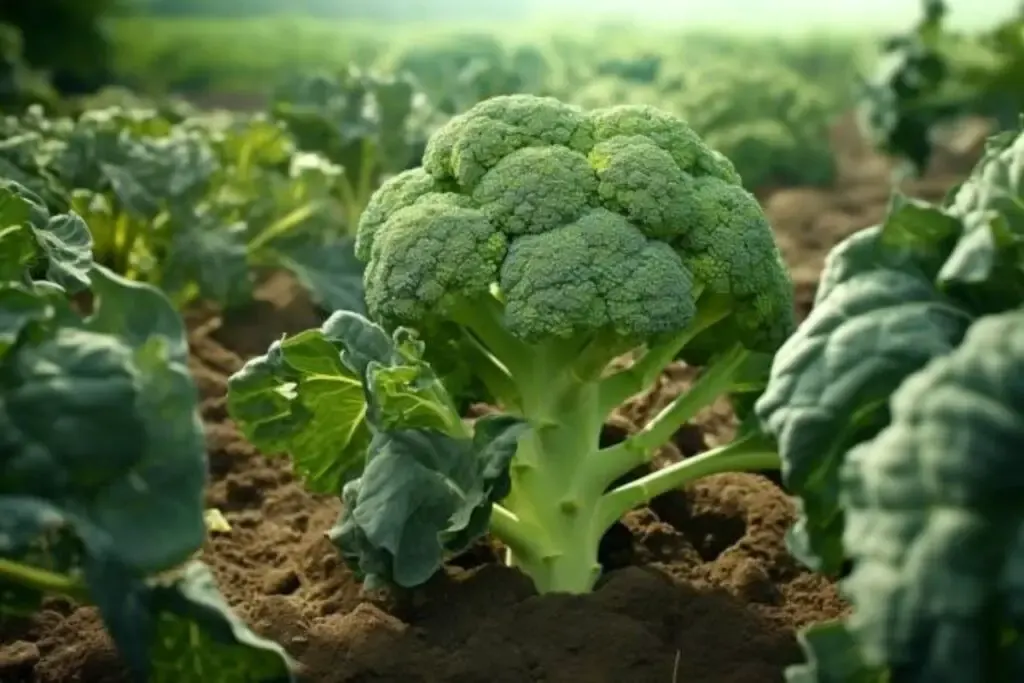
1. Nutritional Powerhouse
Broccoli is packed with vitamins, minerals, and antioxidants. It’s a great source of Vitamin C, Vitamin K, iron, and potassium, and also contains more protein than most other vegetables.
2. Extended Harvest Season
One of the great things about broccoli is its extended harvesting period. With the right planning and care, you can enjoy fresh broccoli from early summer through late fall.
3. Pest Deterrent
Interestingly, broccoli can help deter garden pests. Its strong aroma can mask the scent of more susceptible plants, offering a form of natural pest control in your garden.
My Favorite Broccoli Varieties
Choosing the right variety of broccoli can greatly enhance your gardening experience and the quality of your harvest. Each variety has its own unique characteristics, including flavor, size, and growth habits.
Here are three broccoli varieties that I have found to be particularly rewarding and enjoyable to grow:
1. Calabrese
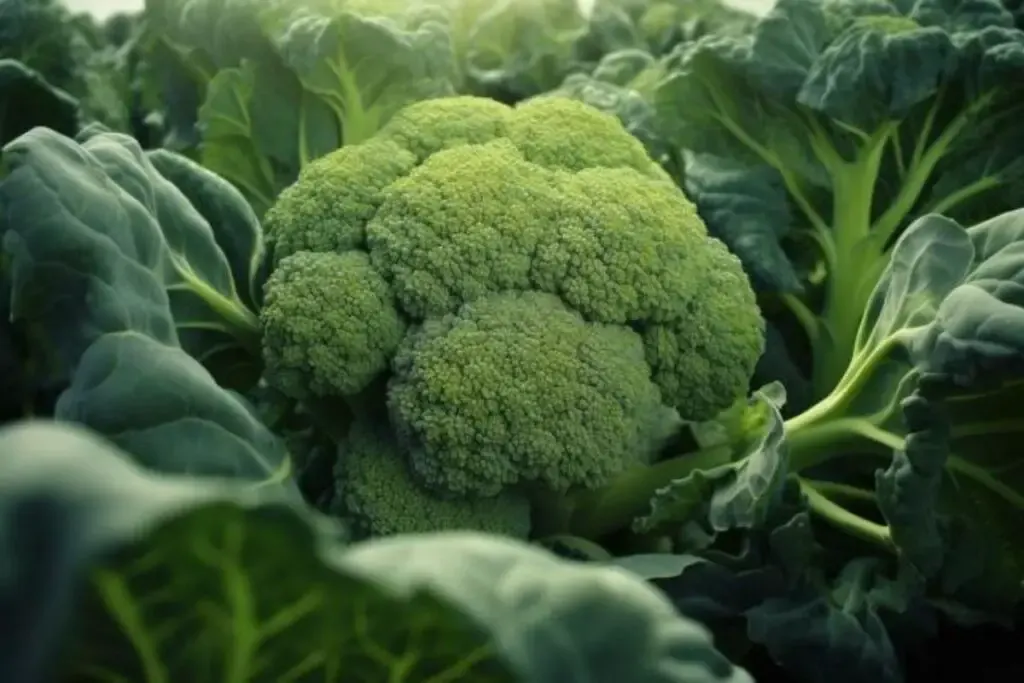
Named after its region of origin in Italy, Calabrese is a popular variety known for its large, green heads and excellent flavor. It’s a traditional heirloom variety that’s easy to grow, making it a great choice for beginners.
2. Waltham 29
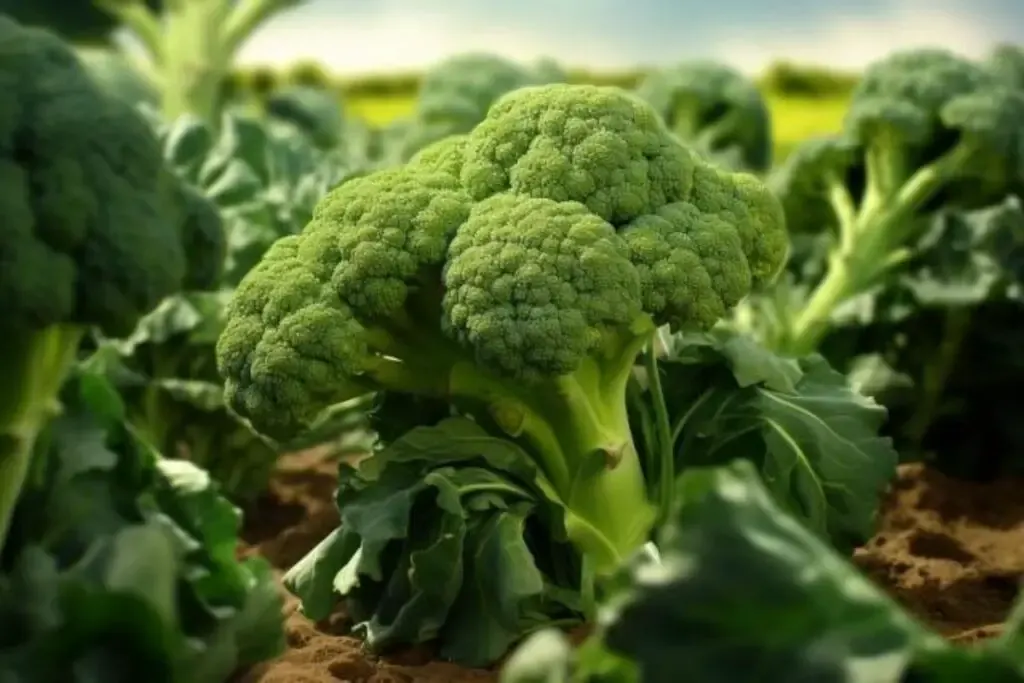
This is a cold-resistant variety, making it ideal for gardeners in cooler climates. It produces medium to large heads and is known for its tendency to yield a plentiful second harvest of side shoots after the main head is harvested.
3. Green Magic
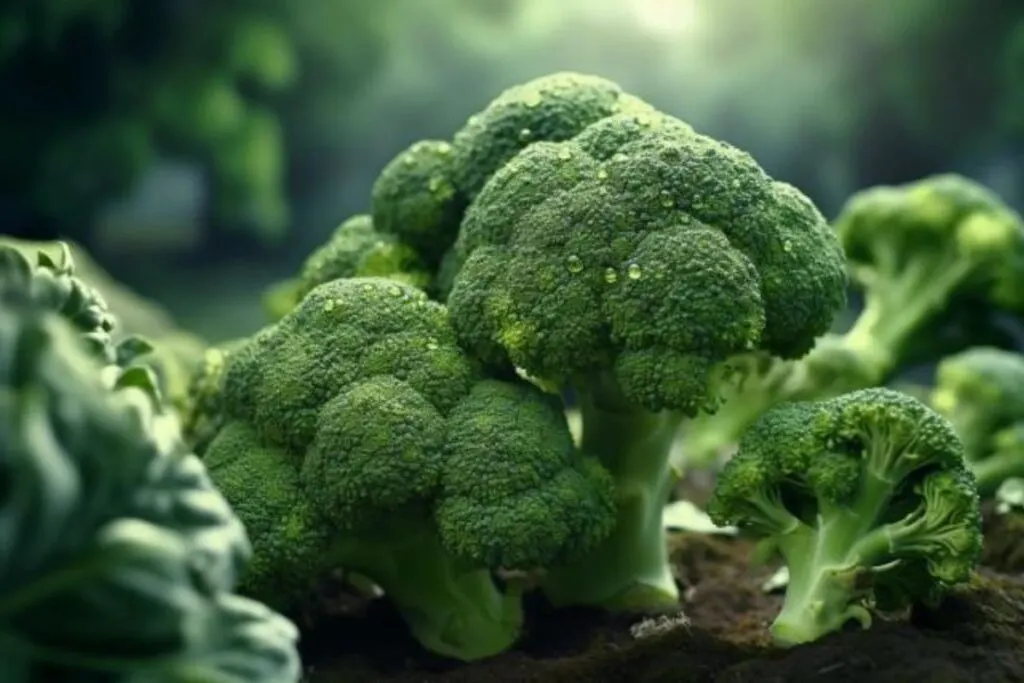
A newer hybrid variety, Green Magic is known for its adaptability to different climates and its ability to produce high-quality heads even in warmer temperatures.
It offers a compact growth habit and uniform heads, making it a favorite among both home gardeners and commercial growers.
Broccoli Care
Proper care is crucial for growing healthy and productive broccoli plants. From planting to fertilization, each step plays a vital role in ensuring a successful harvest.
Let’s delve into the essential care tips for broccoli.
Planting
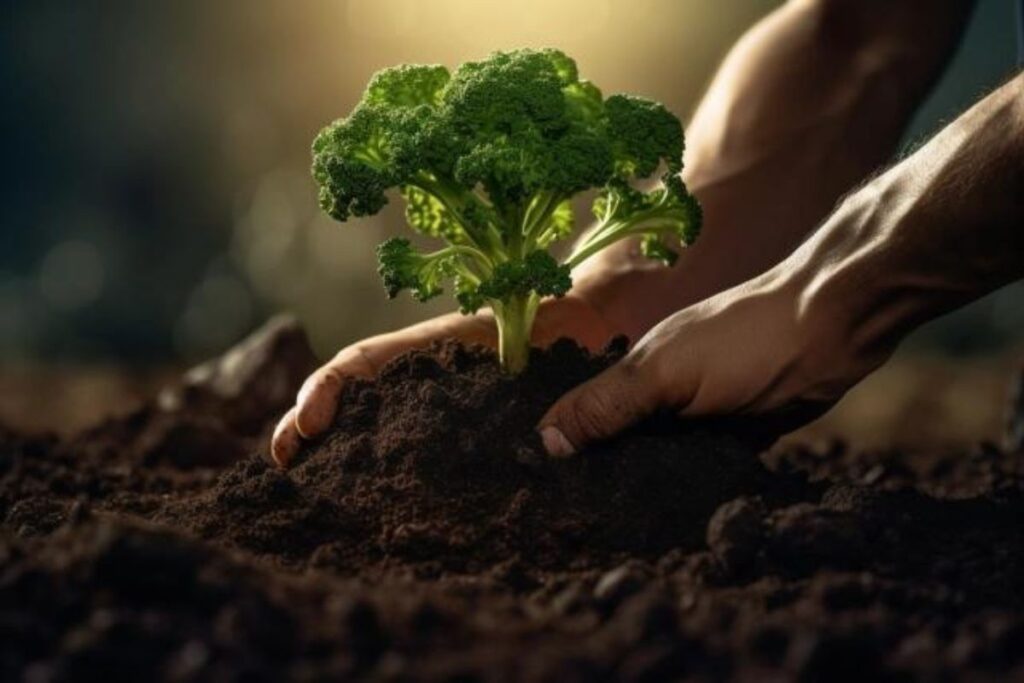
Broccoli can be started indoors or sown directly into the garden. For an early start, plant seeds indoors about 6 weeks before the last expected frost.
Transplant the seedlings outdoors when they are 4 to 6 weeks old, spacing them about 18 inches apart in rows that are 24 to 36 inches apart. If direct sowing, plant seeds about 1/2 inch deep and thin the seedlings once they emerge.
Light
Broccoli requires full sun to thrive, so aim to provide at least 6 to 8 hours of direct sunlight each day. Adequate sunlight is crucial for the development of tight, compact heads.
Soil
This vegetable prefers well-draining, fertile soil with a pH between 6.0 and 7.0. Before planting, enrich the soil with compost or well-rotted manure to improve its fertility and texture.
Water
Regular and consistent watering is key for broccoli. The soil should be kept evenly moist but not waterlogged. Aim for about 1 to 1.5 inches of water per week, either through rainfall or irrigation.
Temperature and Humidity
Broccoli grows best in cooler temperatures, ideally between 60°F and 70°F. It can tolerate a bit of heat but may bolt (go to seed) if temperatures get too warm.
Cooler evening temperatures can also help improve the quality of the heads.
Fertilizer
Use a balanced fertilizer to encourage healthy growth. Apply a slow-release fertilizer at planting time, and consider a side dressing of compost or well-rotted manure midway through the growing season.
Avoid high-nitrogen fertilizers once the heads start to form, as this can affect their quality.
Harvesting Broccoli
Harvesting broccoli at the right time is crucial for the best flavor and texture. The heads should be harvested when they are firm and tight before the flowers start to open.
If you see yellow petals starting to emerge, harvest immediately. Cut the central head off with a sharp knife, leaving at least 6 inches of stem.
Harvesting the main head stimulates the side shoots, which will continue to produce smaller heads for weeks. Regular harvesting of these side shoots encourages continual production.
Pruning
Pruning isn’t a major part of broccoli care, but removing yellowing or dying leaves is beneficial. This helps improve air circulation and overall plant health.
Additionally, after you harvest the main head, you can prune some of the larger leaves to allow more sun to reach the developing side shoots.
Propagating
Broccoli is typically grown from seed and not propagated in the traditional sense. However, if you wish to save seeds, allow some of the side shoots to flower and go to seed.
The seeds can be collected, dried, and stored for planting in the following season. Note that if you are growing hybrid varieties, the saved seeds may not produce plants true to the parent type.
How to Grow Broccoli From Seed
Growing broccoli from seed is a straightforward process. Start seeds indoors about 6 weeks before the last expected frost date.
Plant the seeds 1/4 to 1/2 inch deep in a seed-starting mix. Keep the soil moist and provide plenty of light. Once the seedlings are 4-6 weeks old and there’s no risk of frost, transplant them outdoors, spacing them about 18 inches apart.
Harden off the seedlings by gradually exposing them to outdoor conditions over a week before transplanting.
Growing in Pots
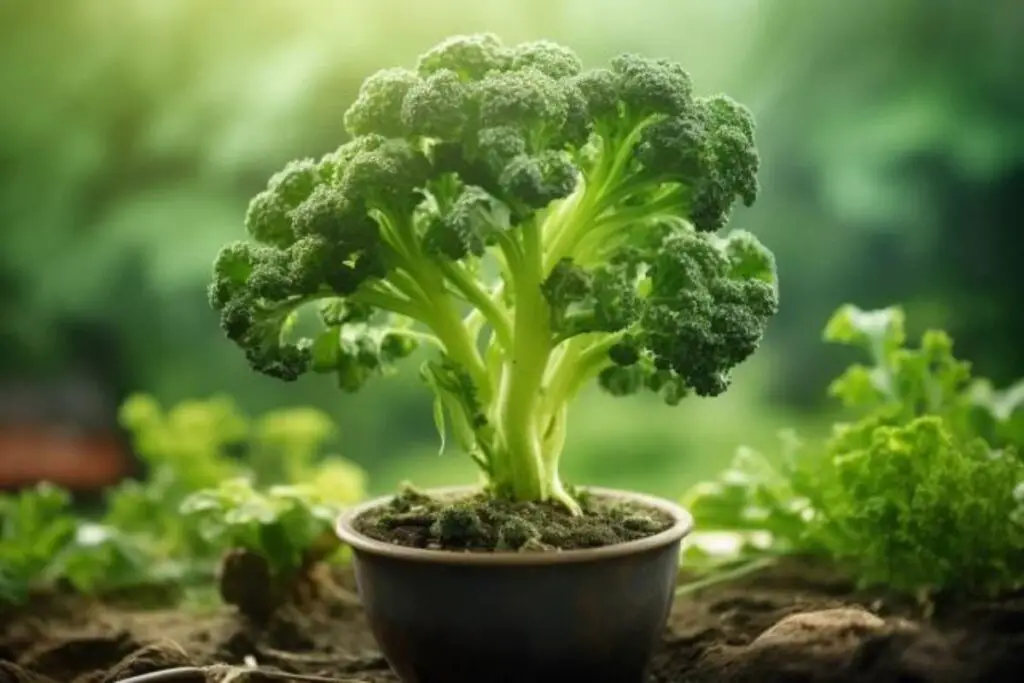
Broccoli can be successfully grown in pots, making it accessible to those with limited garden space. Choose a container that is at least 12 inches deep and wide, with good drainage.
Use a high-quality potting mix and ensure the plant receives full sun. Water regularly to maintain consistent soil moisture, and be mindful that potted plants may require more frequent watering than those in the ground.
Overwintering
Overwintering broccoli can be a bit of a challenge, as it is a cool-season crop but not extremely frost-hardy.
In areas with mild winters, broccoli can sometimes survive the winter months, especially if provided with some protection.
Applying a thick layer of mulch around the base of the plants can help insulate the roots. For added protection, consider using row covers or cold frames to shield the plants from harsher temperatures.
However, in regions with severe winters, it’s usually best to harvest all your broccoli before the first hard freeze.
Transplanting
Transplanting broccoli should be done carefully to minimize stress on the plants. The best time for transplanting is when seedlings are 4 to 6 weeks old and have at least two or three true leaves.
Before transplanting outdoors, harden off the seedlings over a week to acclimate them to outdoor conditions. When transplanting, be gentle and try to disturb the roots as little as possible.
Water the seedlings thoroughly after transplanting to help them settle in their new environment.
Common Pests & Diseases
Broccoli is susceptible to a variety of pests and diseases. Common pests include cabbage loopers, aphids, and flea beetles. These can often be managed with organic insecticides or natural predators.
Diseases like clubroot, black rot, and downy mildew can also affect broccoli. To prevent these, practice crop rotation, ensure good soil drainage, and avoid overhead watering. If a disease does strike, remove and destroy affected plants to prevent its spread.
Growing broccoli in your garden is more than just cultivating a vegetable; it’s about nurturing health and vitality both in your garden and in your kitchen.
With each broccoli head you harvest, you’re reaping the benefits of your care and dedication. Whether you’re a seasoned gardener or just starting out, the journey of growing broccoli is filled with learning and reward.
Enjoy the process and the harvest!

